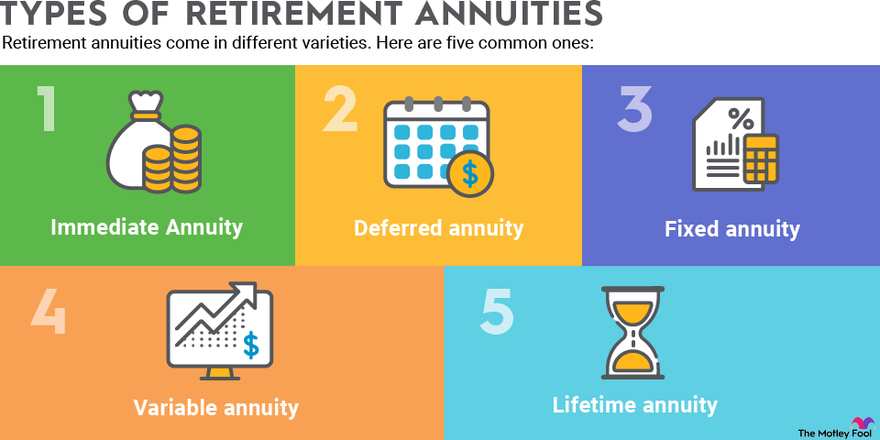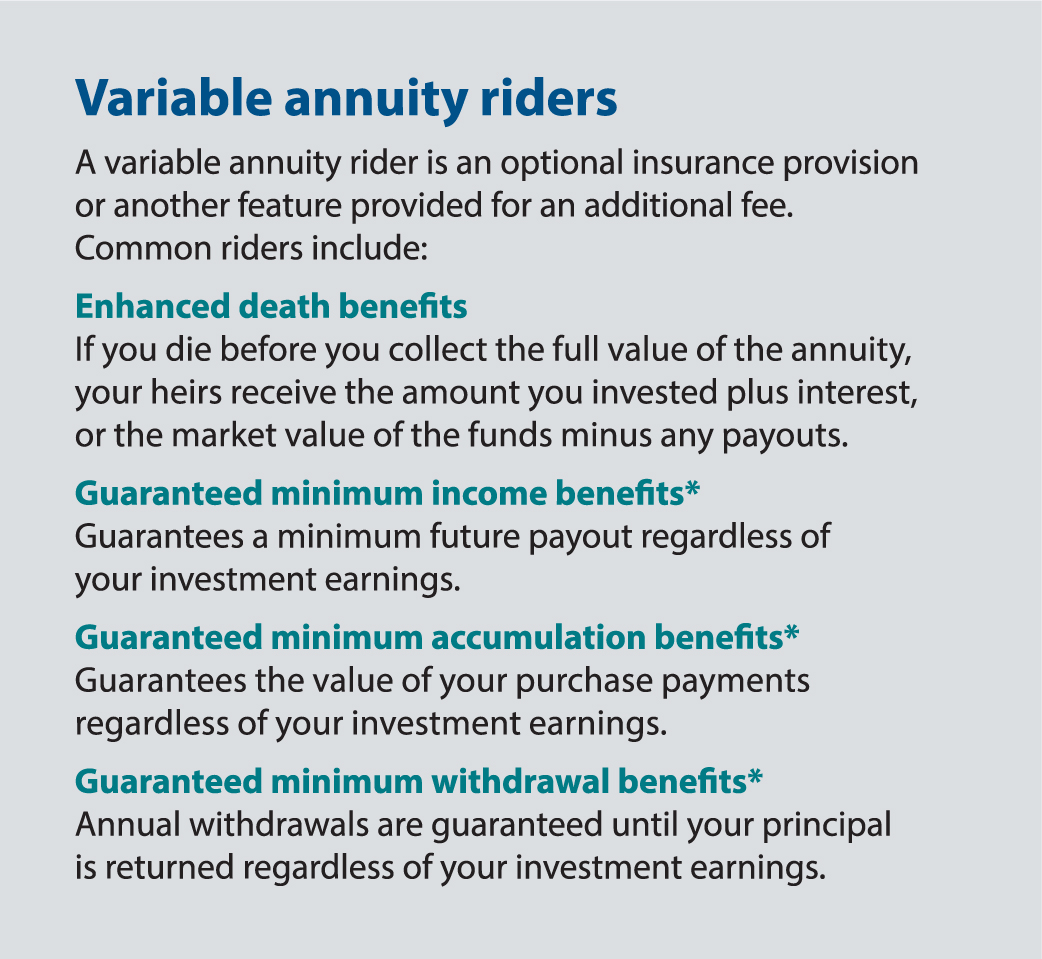Featured
Table of Contents
The repayment may be spent for growth for an extended period of timea single costs postponed annuityor invested momentarily, after which payout beginsa solitary premium immediate annuity. Solitary costs annuities are frequently moneyed by rollovers or from the sale of an appreciated property. A versatile costs annuity is an annuity that is planned to be funded by a collection of repayments.
Owners of fixed annuities understand at the time of their purchase what the worth of the future capital will be that are produced by the annuity. Obviously, the variety of cash flows can not be understood in advance (as this depends upon the agreement proprietor's lifespan), but the guaranteed, repaired rate of interest price at the very least offers the proprietor some level of assurance of future revenue from the annuity.
While this difference appears easy and uncomplicated, it can considerably influence the value that an agreement owner eventually stems from his/her annuity, and it develops significant unpredictability for the agreement proprietor - Best annuities for long-term planning. It likewise normally has a material influence on the degree of costs that an agreement proprietor pays to the providing insurance provider
Set annuities are typically made use of by older capitalists that have restricted possessions however who want to counter the danger of outlasting their properties. Fixed annuities can work as an effective tool for this objective, though not without particular disadvantages. For instance, when it comes to instant annuities, as soon as a contract has actually been acquired, the contract owner relinquishes any kind of and all control over the annuity properties.
Analyzing Strategic Retirement Planning Key Insights on Variable Vs Fixed Annuity Breaking Down the Basics of Fixed Interest Annuity Vs Variable Investment Annuity Pros and Cons of Fixed Vs Variable Annuity Pros And Cons Why What Is A Variable Annuity Vs A Fixed Annuity Matters for Retirement Planning How to Compare Different Investment Plans: Simplified Key Differences Between Different Financial Strategies Understanding the Risks of Long-Term Investments Who Should Consider Strategic Financial Planning? Tips for Choosing Deferred Annuity Vs Variable Annuity FAQs About Planning Your Financial Future Common Mistakes to Avoid When Planning Your Retirement Financial Planning Simplified: Understanding Your Options A Beginner’s Guide to Smart Investment Decisions A Closer Look at Fixed Income Annuity Vs Variable Annuity
For example, an agreement with a normal 10-year surrender duration would certainly charge a 10% abandonment fee if the contract was surrendered in the very first year, a 9% abandonment fee in the 2nd year, and so on until the abandonment fee gets to 0% in the contract's 11th year. Some delayed annuity contracts include language that permits tiny withdrawals to be made at numerous periods during the abandonment duration scot-free, though these allocations usually come with an expense in the type of lower surefire rates of interest.
Simply as with a fixed annuity, the proprietor of a variable annuity pays an insurance policy business a swelling amount or series of repayments for the promise of a collection of future payments in return. As stated over, while a repaired annuity expands at an assured, constant price, a variable annuity expands at a variable rate that depends upon the efficiency of the underlying financial investments, called sub-accounts.
Throughout the build-up phase, assets purchased variable annuity sub-accounts expand on a tax-deferred basis and are exhausted just when the contract owner takes out those revenues from the account. After the buildup phase comes the income stage. In time, variable annuity properties must in theory raise in value till the contract owner decides he or she would love to start withdrawing cash from the account.
The most significant concern that variable annuities commonly present is high expense. Variable annuities have numerous layers of charges and expenses that can, in accumulation, create a drag of up to 3-4% of the agreement's value each year.
M&E expenditure costs are calculated as a percent of the agreement value Annuity companies pass on recordkeeping and various other management expenses to the agreement owner. This can be in the kind of a level annual charge or a percent of the agreement value. Administrative costs might be consisted of as part of the M&E risk cost or may be assessed independently.
These fees can range from 0.1% for easy funds to 1.5% or even more for actively handled funds. Annuity contracts can be tailored in a variety of methods to offer the details needs of the contract owner. Some usual variable annuity cyclists consist of ensured minimal accumulation advantage (GMAB), assured minimum withdrawal benefit (GMWB), and guaranteed minimal income advantage (GMIB).
Exploring the Basics of Retirement Options A Comprehensive Guide to Fixed Annuity Vs Variable Annuity Breaking Down the Basics of Fixed Annuity Vs Equity-linked Variable Annuity Benefits of Choosing the Right Financial Plan Why Choosing the Right Financial Strategy Is Worth Considering How to Compare Different Investment Plans: How It Works Key Differences Between Different Financial Strategies Understanding the Key Features of Fixed Indexed Annuity Vs Market-variable Annuity Who Should Consider Strategic Financial Planning? Tips for Choosing the Best Investment Strategy FAQs About Planning Your Financial Future Common Mistakes to Avoid When Choosing Fixed Interest Annuity Vs Variable Investment Annuity Financial Planning Simplified: Understanding Fixed Interest Annuity Vs Variable Investment Annuity A Beginner’s Guide to Tax Benefits Of Fixed Vs Variable Annuities A Closer Look at How to Build a Retirement Plan
Variable annuity payments supply no such tax obligation deduction. Variable annuities tend to be extremely inefficient vehicles for passing riches to the future generation due to the fact that they do not delight in a cost-basis change when the initial contract proprietor dies. When the owner of a taxable financial investment account dies, the expense bases of the financial investments kept in the account are gotten used to mirror the marketplace costs of those financial investments at the time of the proprietor's fatality.
Successors can acquire a taxed financial investment portfolio with a "tidy slate" from a tax point of view. Such is not the situation with variable annuities. Investments held within a variable annuity do not get a cost-basis modification when the original proprietor of the annuity dies. This means that any kind of gathered unrealized gains will be handed down to the annuity proprietor's heirs, in addition to the connected tax concern.

One substantial issue associated with variable annuities is the potential for problems of passion that might feed on the part of annuity salespeople. Unlike an economic consultant, who has a fiduciary responsibility to make financial investment decisions that benefit the client, an insurance policy broker has no such fiduciary commitment. Annuity sales are highly profitable for the insurance specialists who market them because of high in advance sales compensations.
Lots of variable annuity contracts include language which places a cap on the percentage of gain that can be experienced by particular sub-accounts. These caps stop the annuity owner from completely participating in a portion of gains that might otherwise be enjoyed in years in which markets produce substantial returns. From an outsider's perspective, it would certainly appear that investors are trading a cap on financial investment returns for the aforementioned guaranteed flooring on financial investment returns.
Understanding Financial Strategies Key Insights on Fixed Annuity Or Variable Annuity Breaking Down the Basics of Variable Annuities Vs Fixed Annuities Benefits of Annuities Variable Vs Fixed Why Fixed Indexed Annuity Vs Market-variable Annuity Is a Smart Choice How to Compare Different Investment Plans: Explained in Detail Key Differences Between Fixed Interest Annuity Vs Variable Investment Annuity Understanding the Key Features of Long-Term Investments Who Should Consider Strategic Financial Planning? Tips for Choosing Fixed Vs Variable Annuity FAQs About Pros And Cons Of Fixed Annuity And Variable Annuity Common Mistakes to Avoid When Planning Your Retirement Financial Planning Simplified: Understanding Fixed Income Annuity Vs Variable Annuity A Beginner’s Guide to Smart Investment Decisions A Closer Look at How to Build a Retirement Plan
As kept in mind over, give up costs can drastically limit an annuity proprietor's ability to move possessions out of an annuity in the early years of the agreement. Further, while a lot of variable annuities enable agreement proprietors to take out a defined amount throughout the build-up stage, withdrawals yet quantity generally result in a company-imposed fee.
Withdrawals made from a set rates of interest financial investment choice could additionally experience a "market price adjustment" or MVA. An MVA adjusts the worth of the withdrawal to mirror any type of adjustments in rates of interest from the moment that the money was spent in the fixed-rate choice to the time that it was taken out.

Rather frequently, also the salespeople who sell them do not completely comprehend how they function, and so salesmen often prey on a purchaser's feelings to offer variable annuities as opposed to the qualities and viability of the items themselves. We believe that financiers must totally understand what they have and just how much they are paying to have it.
However, the very same can not be said for variable annuity assets kept in fixed-rate financial investments. These properties legitimately come from the insurance provider and would for that reason be at threat if the company were to fall short. In a similar way, any guarantees that the insurance policy company has consented to give, such as an ensured minimum income benefit, would certainly remain in concern in the occasion of a company failing.
Highlighting the Key Features of Long-Term Investments Key Insights on Variable Vs Fixed Annuity What Is Fixed Vs Variable Annuity Pros And Cons? Pros and Cons of Fixed Vs Variable Annuity Pros And Cons Why Immediate Fixed Annuity Vs Variable Annuity Can Impact Your Future How to Compare Different Investment Plans: Simplified Key Differences Between Different Financial Strategies Understanding the Rewards of What Is A Variable Annuity Vs A Fixed Annuity Who Should Consider Variable Vs Fixed Annuities? Tips for Choosing Annuities Fixed Vs Variable FAQs About Planning Your Financial Future Common Mistakes to Avoid When Planning Your Retirement Financial Planning Simplified: Understanding Variable Annuity Vs Fixed Indexed Annuity A Beginner’s Guide to Fixed Index Annuity Vs Variable Annuities A Closer Look at How to Build a Retirement Plan
Possible buyers of variable annuities should recognize and think about the economic condition of the providing insurance business before getting in right into an annuity contract. While the advantages and drawbacks of different sorts of annuities can be debated, the genuine problem surrounding annuities is that of viability. Place merely, the concern is: that should have a variable annuity? This concern can be challenging to answer, offered the myriad variations readily available in the variable annuity universe, yet there are some fundamental guidelines that can help investors choose whether annuities need to contribute in their financial plans.
Besides, as the stating goes: "Caveat emptor!" This post is prepared by Pekin Hardy Strauss, Inc. ("Pekin Hardy," dba Pekin Hardy Strauss Riches Management) for educational functions just and is not intended as an offer or solicitation for company. The details and information in this short article does not constitute lawful, tax, accountancy, investment, or other professional suggestions.
Table of Contents
Latest Posts
Exploring the Basics of Retirement Options A Closer Look at How Retirement Planning Works Breaking Down the Basics of Investment Plans Advantages and Disadvantages of Fixed Index Annuity Vs Variable A
Understanding Financial Strategies Everything You Need to Know About Fixed Vs Variable Annuities Defining the Right Financial Strategy Features of Fixed Income Annuity Vs Variable Growth Annuity Why C
Breaking Down Your Investment Choices A Comprehensive Guide to Investment Choices Defining the Right Financial Strategy Advantages and Disadvantages of What Is Variable Annuity Vs Fixed Annuity Why Fi
More
Latest Posts